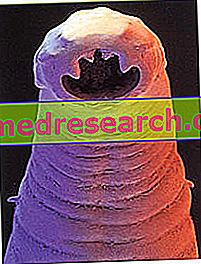Introduction
Urination can be defined as the act of urinating .

A more detailed description, however, defines urination as the set of all those physiological processes that leads to the excretion of urine.
The urination, therefore, is a physiological act of fundamental importance for the organism, since it allows to eliminate the waste substances filtered by the kidneys.
Curiosity
While in men the urination is carried out for the sole purpose of expelling waste substances, various animals exploit this act to mark the territory with their own smell (for example, cats, dogs, etc.).
In healthy individuals, urination is a voluntarily controlled process, in fact, although the urge to urinate is perceived, it is possible to consciously decide whether or not to empty the bladder. In contrast, in newborns, in children under the age of 2 or 3 years, in some elderly individuals and in patients suffering from neurological lesions, voluntary control is lost and urination occurs as a reflex mechanism .
In the course of the article, mechanisms and characteristics of the physiological processes leading to the excretion of the urine will be briefly described, as well as the main alterations of the micturition that can occur, their causes, the disorders and the pathologies related to them will be synthetically described.
What is that
What is Urination?
In general terms, urination can be defined as the act of expelling urine, and therefore the act of urinating.
Going into more detail, however, it is possible to describe urination as the set of physiological processes - both voluntary and involuntary in nature - which leads to the emptying of the bladder content, then to the elimination of urine, through the urethra .
How it happens
How Does Urination Occur?
As mentioned, urination can be considered as the set of a series of voluntary and involuntary acts that culminates with the emptying of the bladder and the expulsion of urine from the body through the urethra.

More precisely, the act of pushing sees the involvement of both the nervous system and the muscles of the urinary tract . It follows that, in order for the urination to occur, the nervous system (either voluntary - or somatic, whatever you wish - or autonomous), as well as the smooth and striated musculature present at the level of the urinary tract, must be perfectly functional.
Therefore, the main steps leading to the appearance of the urination and the mechanisms that allow emptying the bladder will be briefly described below.
Previous Urination Steps
In order for urination to occur, the following "preliminary" phases must occur:
- Gradual filling of the bladder : urine, from the kidneys, is conveyed into the latter through the ureters. As the bladder fills, there is a progressive increase in wall tension until a critical value is reached - variable from individual to individual - which leads to the activation of the phase described below.
- Activation of the urination reflex : it is a nervous reflex that is activated when a quantity of urine is collected inside the bladder such as to:
- Stretch the bladder walls ;
- Stimulate the stretch receptors on it;
- Induce stretching of the posterior urethra .
- Perception of the need to empty the bladder : this perception is obtained by stimulating the above mentioned stretch receptors that send impulses - through the spinal nerves S2, S3 and S4 - to the spinal cord and to the sensory cortex where the need for emptying is perceived.
Curiosity
In men, the urge to urinate can be felt both at the level of the bladder and at the base of the penis. In women, however, this stimulus is usually perceived at the level of the lower part of the abdomen.
Emptying of the bladder and urination
The emptying of the bladder, therefore the urination, is dependent on the contraction of the detrusor muscle (smooth muscle of the bladder) and is hindered by the tone of the internal sphincter of the posterior urethra (consisting of involuntary smooth musculature ) and by the contraction of the external sphincter of the urethra which, instead, consists of striated muscle tissue that allows voluntary control of urine leakage.
When the individual perceives the need to urinate - if in normal health conditions - he can decide voluntarily whether to proceed with the emptying of the bladder or whether to wait further.
Did you know that ...
The frequency of bladder emptying during the day varies from individual to individual. Indicatively, in healthy people, the number of urinations varies from four to seven times a day. Usually, but not necessarily, women need to paint more frequently than men.
If you decide not to press, the external sphincter remains contracted and the bladder continues to fill up until the urination reflex increases.
If, on the other hand, you decide to proceed with urination, the voluntary signals are transmitted from the motor cortex to the pontine center of urination . The latter will coordinate the signals for:
- The relaxation of the smooth muscle of the internal sphincter (through the alpha-sympathetic nerve fibers);
- The simultaneous contraction of the detrusor muscle of the bladder (through the parasympathetic cholinergic nerve fibers);
- The relaxation of the striated musculature of the external sphincter .
In addition, the abdominal and pelvic muscles also come into play when urinating. More in detail, the contraction of the abdominal muscles, the muscles of the diaphragm, the levator ani and the deep transverse of the perineum (lowering of the pelvic floor) occurs.
Please note
The continence and the emptying of the bladder - in addition to the coordination between the nervous system and the muscles of the genitourinary apparatus - necessarily require that the individual possesses a normal cognitive function, mobility and access to a toilet, or in any case to a quiet place where to fulfill their needs.
Disorders and Pathologies
Changes in Urination and Associated Pathologies
As we have seen, the process of urination involves the involvement of various elements, nervous and muscular. Any dysfunction and / or injury of one or more of the components involved in voiding the bladder can give rise to micturition abnormalities, such as incontinence or urinary retention .

Below, some of the most widespread micturition abnormalities will be reported with reference to dysfunctions, disorders or pathological conditions that can cause, favor or increase them.
Urinary retention
Urinary retention is defined as the inability to completely empty the bladder . It is a urination disorder that can manifest itself in an acute form, or in a chronic form . The main causes are:
- Reduced bladder contractility;
- Urine flow obstruction;
- Loss of coordination between bladder contraction and sphincter muscle relaxation.
There are many disorders and pathological conditions that can lead to the appearance of urinary retention. In many cases, this urination disorder represents the complication of pathologies affecting the urogenital system (for example, prostatic hypertrophy, bladder stones, vaginal prolapse, cancer, etc.), but may also be due to:
- Taking some types of drugs (for example, antihypertensives, NSAIDs, anticholinergics, etc.);
- Severe fecal stasis;
- Neurological bladder in patients with Parkinson's disease, diabetes, multiple sclerosis or who have undergone pelvic surgery with bladder denervation.
Urinary incontinence
Urinary incontinence is a urination disorder characterized by the involuntary loss of urine . It is particularly common among the elderly and women, but can occur at any age.
Among the conditions and pathologies that can cause, promote or increase this urination disorder, we recall:
- Pregnancy and childbirth (can cause weakening of the pelvic muscles and urethral hypermobility);
- Menopause;
- Atrophic urethritis;
- urethritis;
- Benign prostatic hyperplasia;
- Prostate cancer;
- Taking some types of drugs (for example, diuretics, anticholinergics, alpha-adrenergic receptor antagonists, calcium channel blockers, etc.);
- Prolapse of the uterus;
- Urinary tract infections;
- Surgical interventions;
- Nervous system disorders;
- Neurological bladder;
- Spinal cord injury or dysfunction;
- Lower motor neuron lesions.
Other Urination Disorders
In addition to retention and urinary incontinence, micturition disorders are also considered:
- Anuria : is the complete suspension of urine production with diuresis of less than 100 ml over 24 hours. In particular, post-renal anuria, generally caused by urinary tract obstruction, can be considered a urination disorder.
- The oliguria : represents a reduced excretion of urine . Usually, we talk about oliguria when diuresis is less than 400 ml over 24 hours.
- Polyuria : is characterized by the production and excretion of very high amounts of urine that are diluted and very light in color.
- Pollakiuria : term used in the medical field to indicate an increase in the frequency of urination during the 24 hours of the day.
- The stranguria : it is a disorder characterized by a slow, difficult and generally painful urination .
- Nocturia : this term defines the need for urination that occurs during the night .
The urination disorders described above usually represent the consequence or symptom of particular physiological, paraphysiological or pathological conditions; therefore, they are not considered as real diseases. However, this does not mean they should be underestimated; in fact, sometimes they could be an indication of the presence of very serious pathologies. Therefore, if any type of urinary disorders or disorders occur, it is advisable to contact your doctor promptly.



